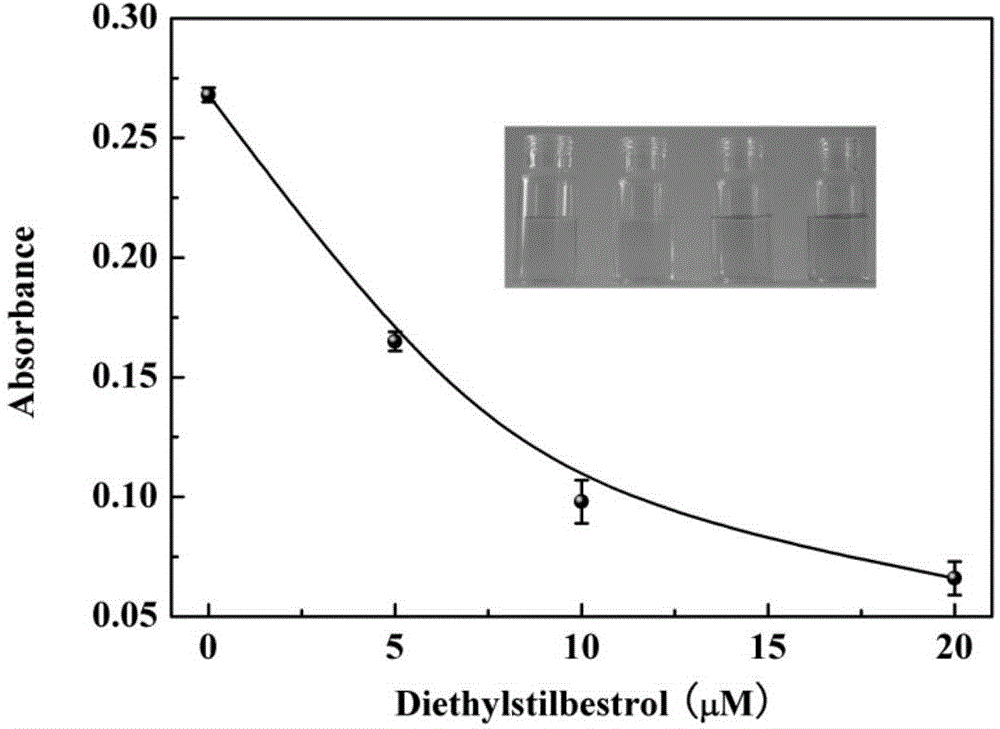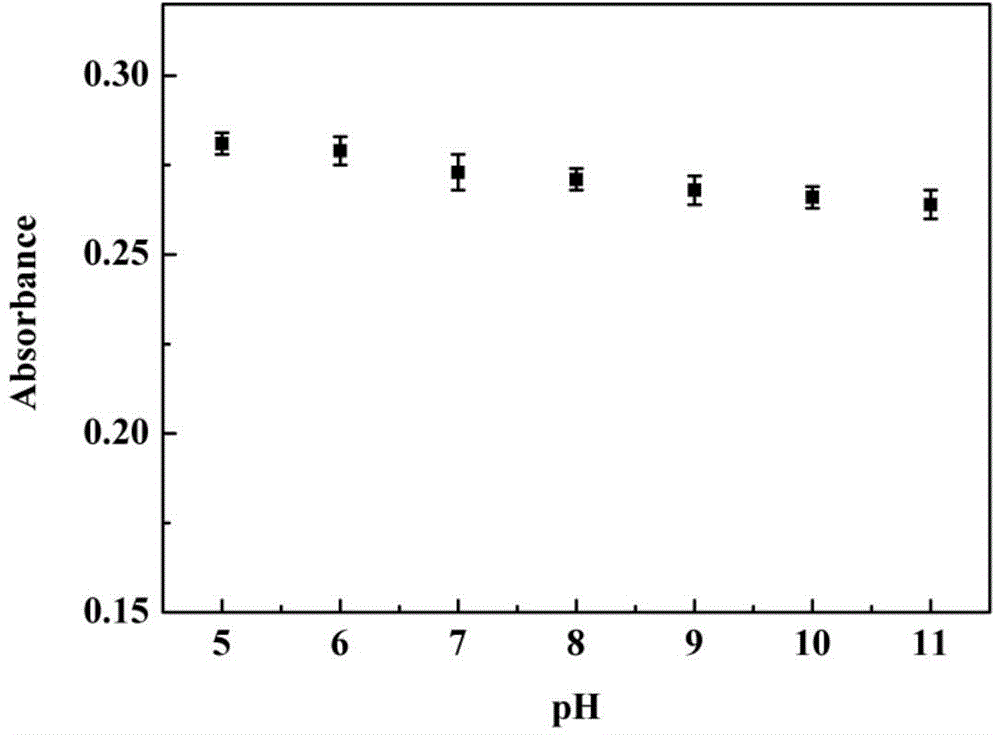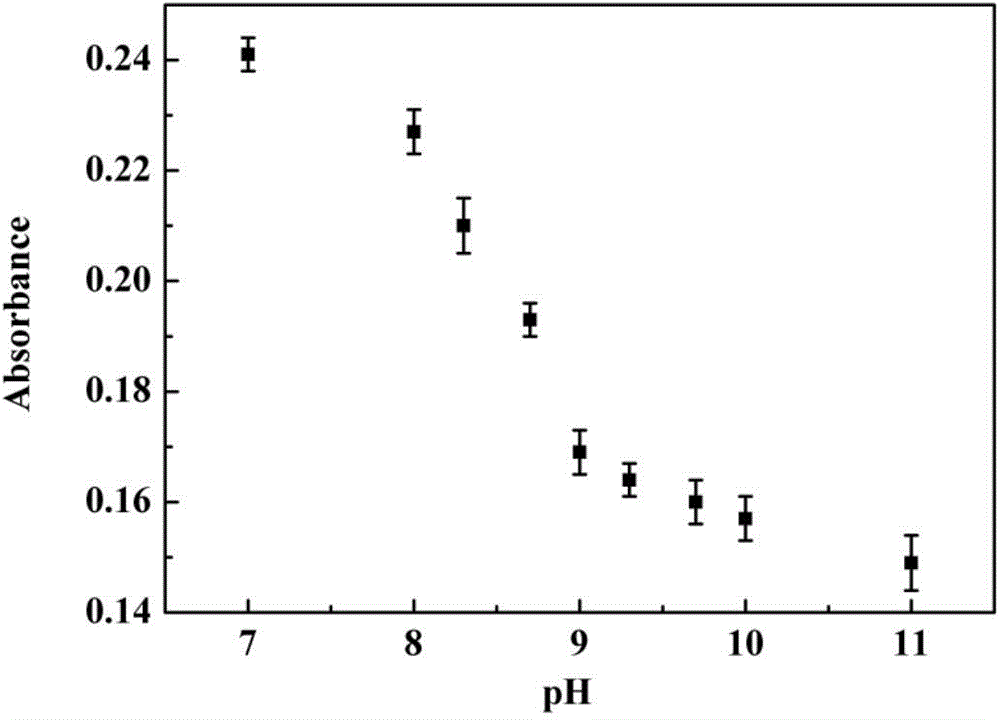Organic compound based on gallocyanine and application of organic compound
A technology for organic compounds and cyanines, applied in the fields of organic chemistry, chemical instruments and methods, and instruments, can solve the problems of complex operation methods and large-scale instruments, and achieve the effects of rapid naked eye visibility, low cost, and improved detection accuracy.
- Summary
- Abstract
- Description
- Claims
- Application Information
AI Technical Summary
Problems solved by technology
Method used
Image
Examples
Embodiment 1
[0021] Example 1. Preparation of cyanine-based organic compounds:
[0022] (1) Preparation of Compound 1
[0023] Dissolve 20-50mL of DMF in a graduated cylinder in 20-40mL of dichloromethane, pour it into a 250mL three-neck flask (stir with a magnet), and cool in an ice-water bath. Dissolve 20-40mL of phosphorus oxychloride into 20-40mL of dichloromethane, pour it into a constant pressure funnel, add dropwise to the above cooled solution, and keep stirring with a magnetic stirrer.
[0024] After the dropwise addition, 5-10 g of cyclohexanone was weighed and poured into the above-mentioned constant pressure funnel to add dropwise. At this time, the color of the solution gradually changed from colorless to yellow. Then the ice-water bath was removed, and heated to reflux for 3 hours. After the reaction was completed, the reaction liquid was poured into crushed ice. Place in a fume hood overnight. The upper layer in the water tank is yellow liquid and the bottom is yellow f...
Embodiment 2
[0040] The prepared compound of formula I is used as a probe in the water body to detect diethylstilbestrol. The following experiments are all carried out under the condition of pH5.0-11.0 (B-R buffer solution, the concentration is 1-30mM), and the concentration of the probe is 0.5-10 μM.
[0041] The pH effect of the above-mentioned prepared probe on the response of diethylstilbestrol:
[0042] The pH gradient was controlled with B-R buffer solution. Add 0.8-1mL of 1-10mMB-R buffer with different pH gradients into a 1.5ml colorimetric tube, then add 1-10μL of 100μM probe, shake the solution, and equilibrate at 25-40℃ for 10-30min, then mix the above The working solution was added to the cuvette to measure the ultraviolet spectrum. Variation of UV absorbance with pH figure 1 shown. Depend on figure 1 It is shown that the ultraviolet absorption value does not change significantly in the range of pH 5.0-11.0, that is, in the system of pH 5.0-11.0, the probes are all stable ...
Embodiment 3
[0044] Probe selectivity for diethylstilbestrol
[0045] The pH was controlled with B-R buffer solution. Take multiple 1.5ml colorimetric tubes, add 0.9-1mL1-10mMB-R buffer solution, pH9-10, to each colorimetric tube, then add 1-10μL 100μM probe shown in formula I as the working solution, and then respectively Add the analytes such as figure 2 As shown, the working solution of the analyte is as follows: blank (no other additives), diethylstilbestrol, bisphenol A, estradiol, estriol, cysteine, homocysteine, glutathione, wherein The final concentration of diethylstilbestrol and bisphenol A was 5 μM, and the other final concentrations were 50 μM. Shake the solution evenly, and after equilibrating at 25-40°C for 10-30 minutes, pour the working solution in each colorimetric tube into the cuvette to measure the ultraviolet spectrum. The selectivity of the probe to diethylstilbestrol is as follows image 3 shown. And it can be seen from the figure that the probe has good select...
PUM
 Login to View More
Login to View More Abstract
Description
Claims
Application Information
 Login to View More
Login to View More - R&D
- Intellectual Property
- Life Sciences
- Materials
- Tech Scout
- Unparalleled Data Quality
- Higher Quality Content
- 60% Fewer Hallucinations
Browse by: Latest US Patents, China's latest patents, Technical Efficacy Thesaurus, Application Domain, Technology Topic, Popular Technical Reports.
© 2025 PatSnap. All rights reserved.Legal|Privacy policy|Modern Slavery Act Transparency Statement|Sitemap|About US| Contact US: help@patsnap.com



